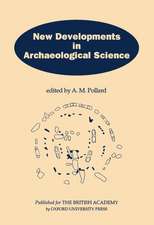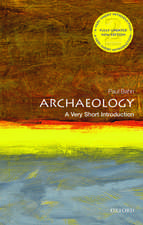Uncovering the Past: A History of Archaeology
Autor William H. Stiebingen Limba Engleză Paperback – 9 feb 1995
Preț: 145.39 lei
Preț vechi: 155.20 lei
-6% Nou
Puncte Express: 218
Preț estimativ în valută:
27.82€ • 28.87$ • 23.26£
27.82€ • 28.87$ • 23.26£
Carte tipărită la comandă
Livrare economică 04-10 martie
Preluare comenzi: 021 569.72.76
Specificații
ISBN-13: 9780195089219
ISBN-10: 0195089219
Pagini: 320
Ilustrații: halftones, line drawings, maps
Dimensiuni: 229 x 154 x 18 mm
Greutate: 0.43 kg
Ediția:Revised
Editura: Oxford University Press
Colecția OUP USA
Locul publicării:New York, United States
ISBN-10: 0195089219
Pagini: 320
Ilustrații: halftones, line drawings, maps
Dimensiuni: 229 x 154 x 18 mm
Greutate: 0.43 kg
Ediția:Revised
Editura: Oxford University Press
Colecția OUP USA
Locul publicării:New York, United States
Recenzii
non-technical ... logically organised ... The book offers a lasting impression of how young, dynamic and productive the field is.














